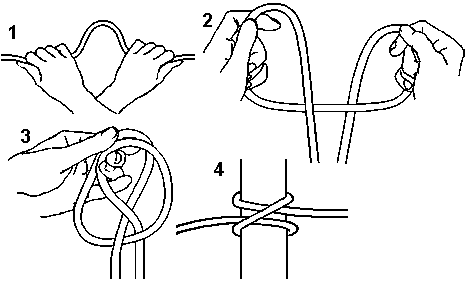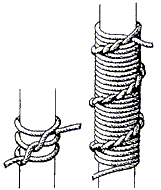| HOME | Clove Hitch |
 |
It has utility as a crossing knot or crossing hitch if both ends of the rope are loaded. The clove hitch can be tied a half of a clove at a time so as to take up slack from the standing part of the rope, making it useful in finishing lashings where you don't want to lose too much tension on your wrappings and frappings. You can deal with the security issue by adding single hitches at the end of your lashing as required.
One quick method of tying, shown above, involves picking up the line with your right arm crossed over your left, palms down. Uncross your arms and then move the left loop behind the right loop. Throw the completed hitch over the end of a post or beam and work it snug.
__________________________________________________________________
Practice twisting bights of rope 180 degrees as you throw them over the end of a pole or beam, twisting in the same direction for each loop. A series of clove hitches will form that can make a spiral pattern (French Spiral Hitching), as seen on the handles of old fishing poles.
| French Spiral Hitching |
 |